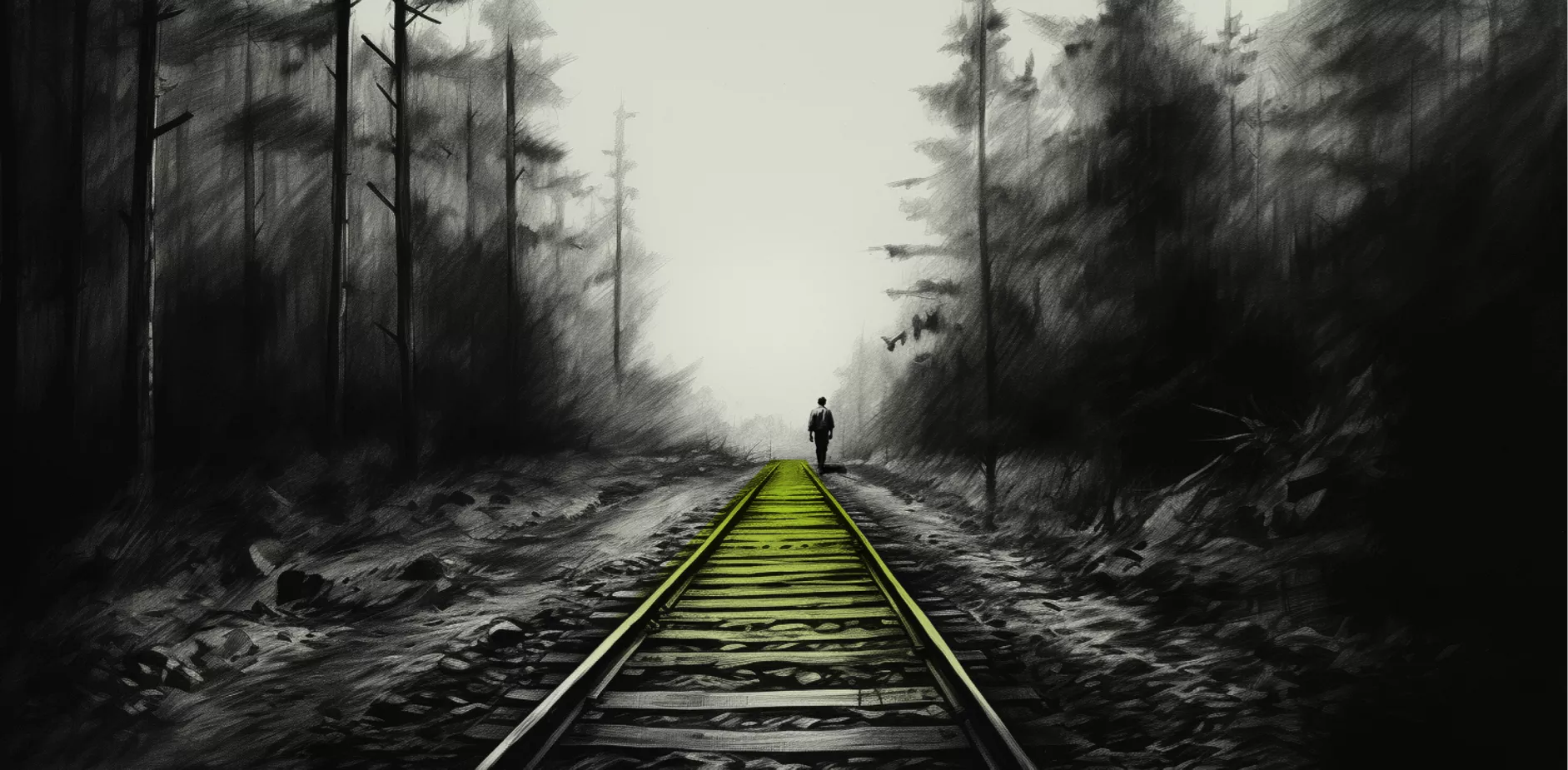
Deportations and escapes
In total, 334 men and 34 women were brought to Wulkow. However, only 215 people returned to the Theresienstadt ghetto on 10 February 1945. Those who could no longer work due to exhaustion were sent back to the ghetto by the camp commandant. Numerous prisoners were deported to concentration camps or police prisons as punishment. Some managed to escape from Wulkow.
After the war, camp commandant Stuschka was charged, among other things, with murder at the Vienna People's Court. The trial mainly centred around the case of Herbert Grätzer, who had fled to his mother in Berlin, was tracked down by Stuschka himself and brought back to Wulkow. During the interrogation in Stuschka's barrack, several prisoners unanimously agreed that they had heard a shot. One prisoner, who had to enter the room afterwards, reported seeing blood on the floor. However, none of the witnesses who appeared in court had seen a corpse. Stuschka was acquitted of the murder charge. Nevertheless, he was at least partly responsible for the deaths of numerous Wulkow prisoners: he deported sick prisoners back to the Theresienstadt ghetto, which was usually tantamount to a death sentence due to the mass deportations to Auschwitz organised from there. He also sent prisoners to the Sachsenhausen concentration camp or to the Gestapo prison Little Fortress, which was located next to the Theresienstadt ghetto. Many were murdered there.
„On 18/01/1945, [Stuschka] sent me and nine others to the detention centre in Berlin, seven of us continued onwards, I don't know what happened to the other three fellow prisoners. The seven of us travelled to the Small Fortress in Theresienstadt where I returned to alone on 25/05/1945 because I became sick with typhoid. The other six fellow prisoners who had travelled with me were killed. I was able to save myself because I volunteered to work as a gravedigger.“
Mikuláš Deckner, undated
„On 13.11.44, because of the escape of two from our work detail, the camp commandant sent [...] me and approx. 20 other prisoners [...] as a punitive transport of hostages first to Berlin-Schulstraße and then a few days later to the Sachsenhausen concentration camp with the remark RU [Rückkehr unerwünscht/return undesirable].“
Jiří Vaníček, 1996
The last detention centre for Jews in Berlin, opened in March 1944, was located in Schulstraße in Berlin-Wedding. It was set up in a section of the Jewish hospital. Those who were deported from Wulkow as a punishment were initially taken there, where they met other prisoners and told them about the abuse they had suffered in Wulkow. Some managed to have themselves declared "unfit for transport" with the help of the medical staff and were consequently liberated in Berlin.
„I remained in critically ill condition in the police hospital in Berlin. I stayed there for 6 months because I was suffering so strongly from the consequences that I am still not fully recovered today. I can only hope that this beast gets the death he deserves because he himself has human lives on his conscience.“
Hildegard Kirmes, 1949
„On 02 December [1944] I came to Berlin with a transport of hostages [...] and was taken to the police station of the Jewish hospital as a seriously ill person. Death touched me again, but apparently didn't want me, because I survived all the transports from the police station to Ravensbrück that were still taking place and was finally liberated on 22 April 1945 when the Russians arrived.“
Käthe Rosenbaum, undated
Male prisoners from Wulkow were deported from Berlin to the Sachsenhausen concentration camp where the SS murdered at least 2,000 prisoners in the courtyard in the spring of 1945. Wulkow prisoners were among the murdered. However, some of them managed to become registered as political prisoners on arrival at the camp. From that moment on wearing the red triangle and thus no longer recognisable as Jews, they increased their chances of survival. One of them was Albert Jungmann, who survived the death march from Sachsenhausen to Mecklenburg.
„The people who came to Sachsenhausen were destined for liquidation. A Dane in the camp, who was a prisoner himself, told me that he had managed to destroy my file card and that of a certain Hans Edel, which meant we escaped liquidation. Fiala, who [Stuschka] had sent to Sachsenhausen for alleged espionage, and Prinz are no longer alive.“
Albert Jungmann, 1947
Most of the Wulkow prisoners were held as hostages. If they escaped, their relatives in Theresienstadt would no longer be protected. Nevertheless, there were numerous escapes in addition to the one of Herbert Grätzer. The fugitives were presumably familiar with the region and had no relatives in Theresienstadt. Among them was a friend of Margot Friedlander from Berlin. After the Wulkow residents returned to the Theresienstadt ghetto in February 1945, where she was also staying, she met her future husband Adolf Friedlander:
„‚Where are you from?' I asked. 'From Wulkow.' 'Then you might know a friend of mine. Everyone calls him Schnäpschen.' 'Schnäpschen, yes, he was with us', he said. 'Up until a few weeks ago.' 'Where is he now?' Adolf hesitated. 'Apparently he escaped. Or at least he tried to. But they caught him.' Adolf didn't know whether Schnäpschen had been shot or if he had been sent East. If Schnäpschen had only managed to hold out for a few more days or weeks, he would have returned to Theresienstadt with the others. He would have survived.“
Margot Friedländer in her book: „Versuche, dein Leben zu machen.“ Als Jüdin versteckt in Berlin. S. 203f.
